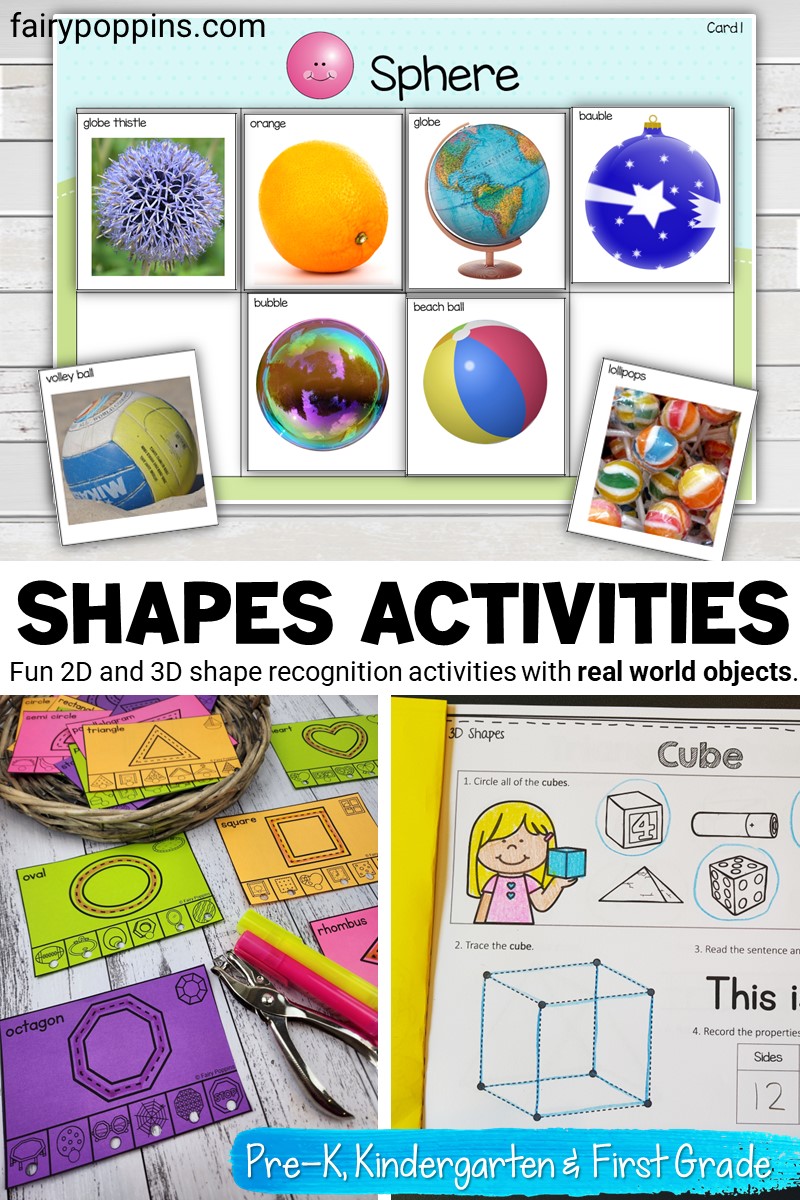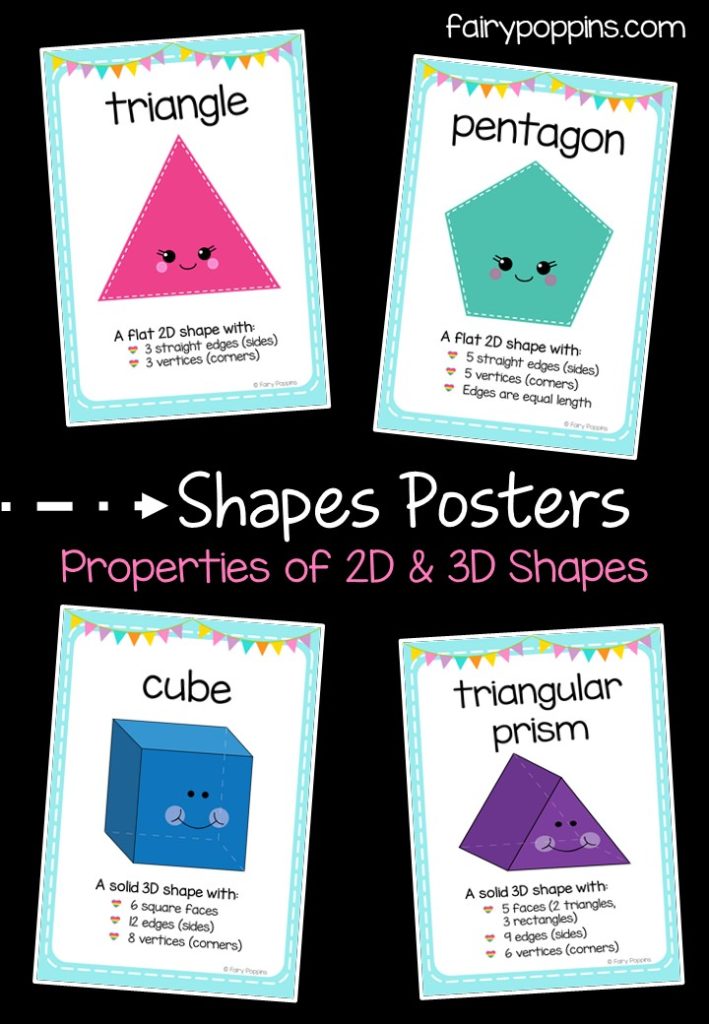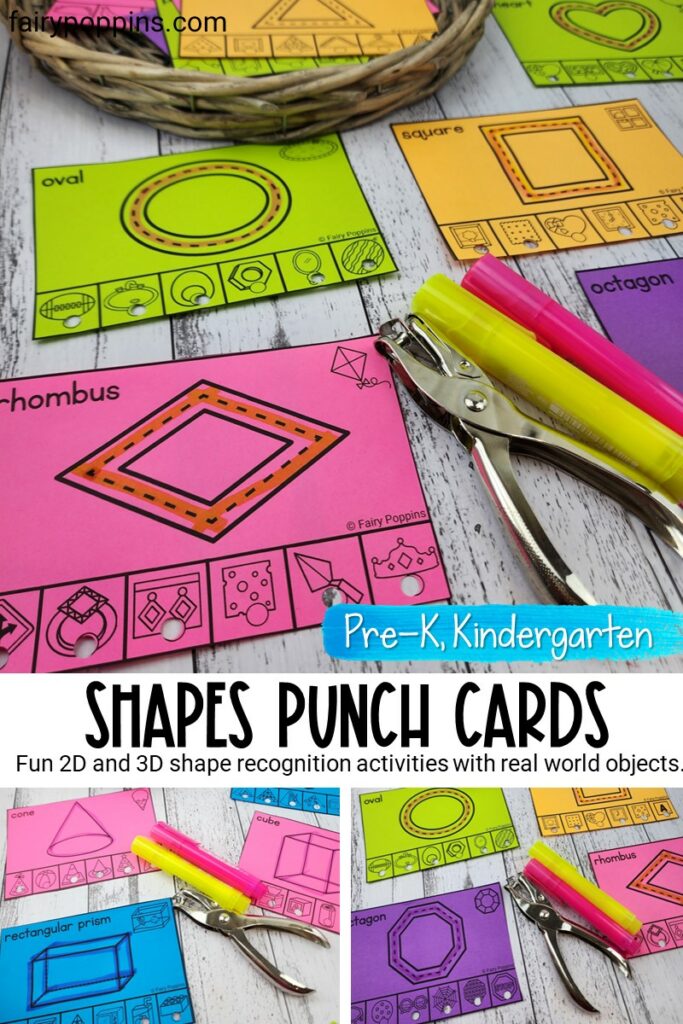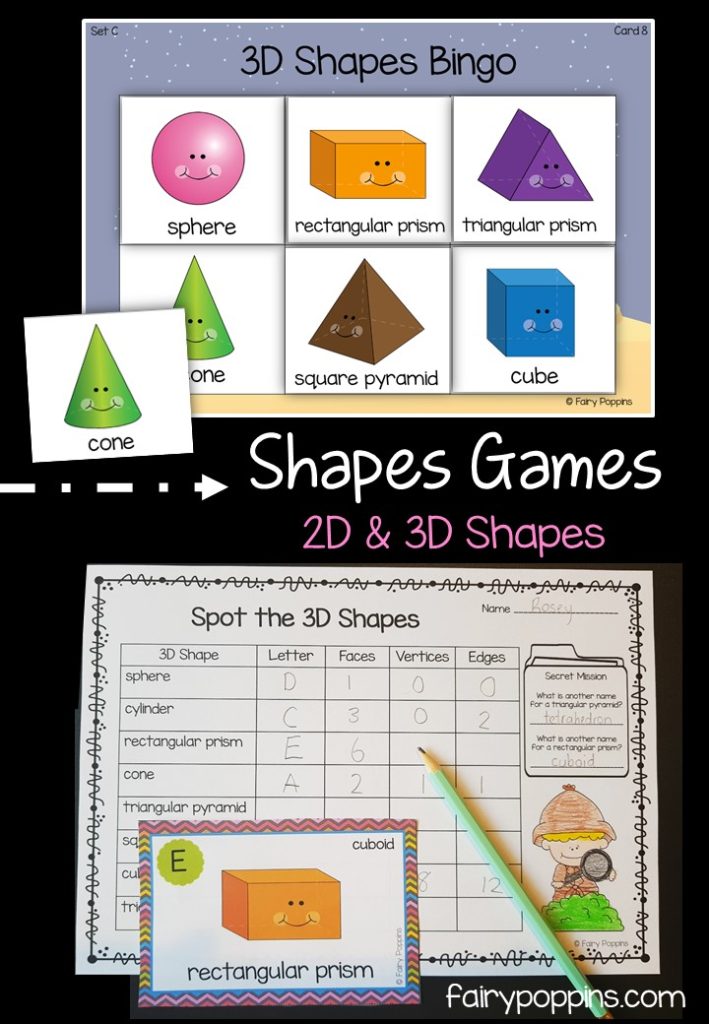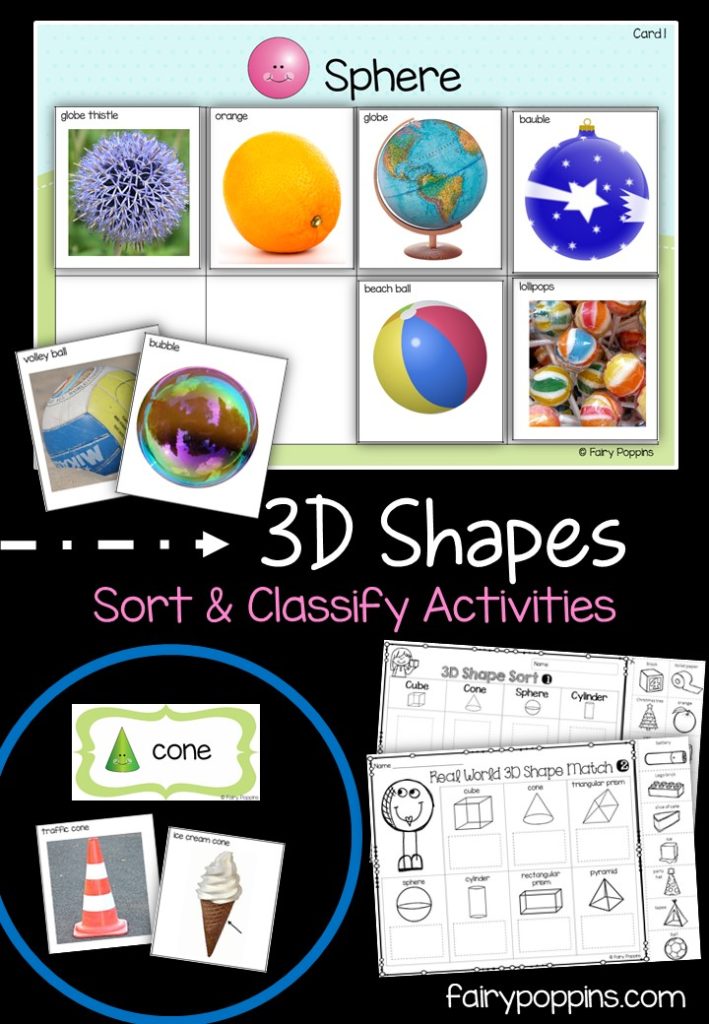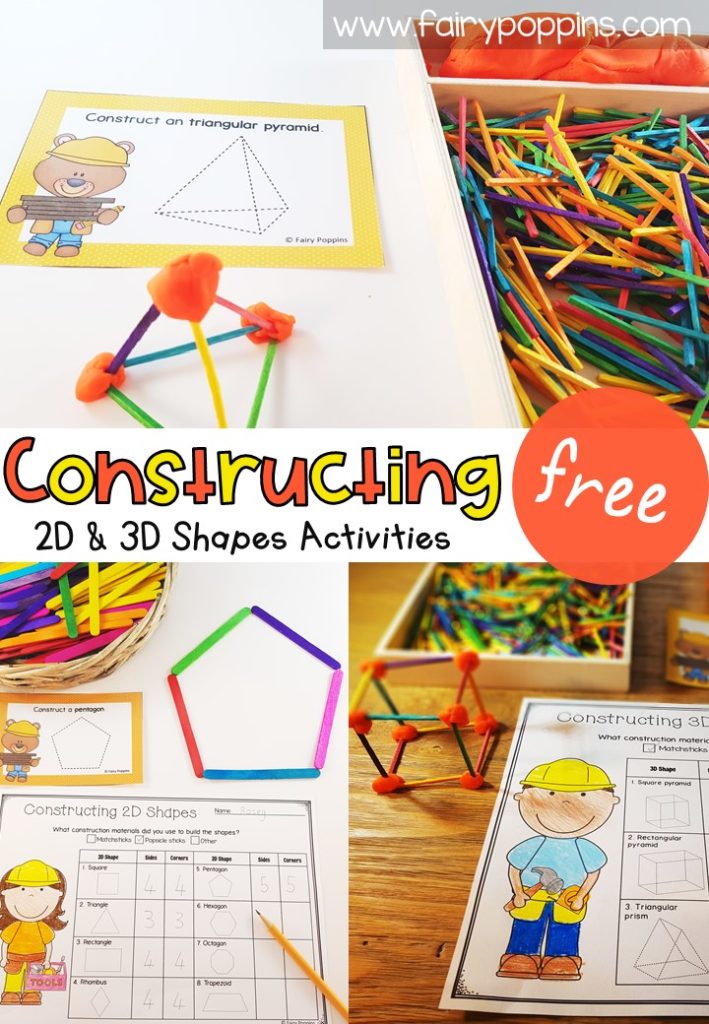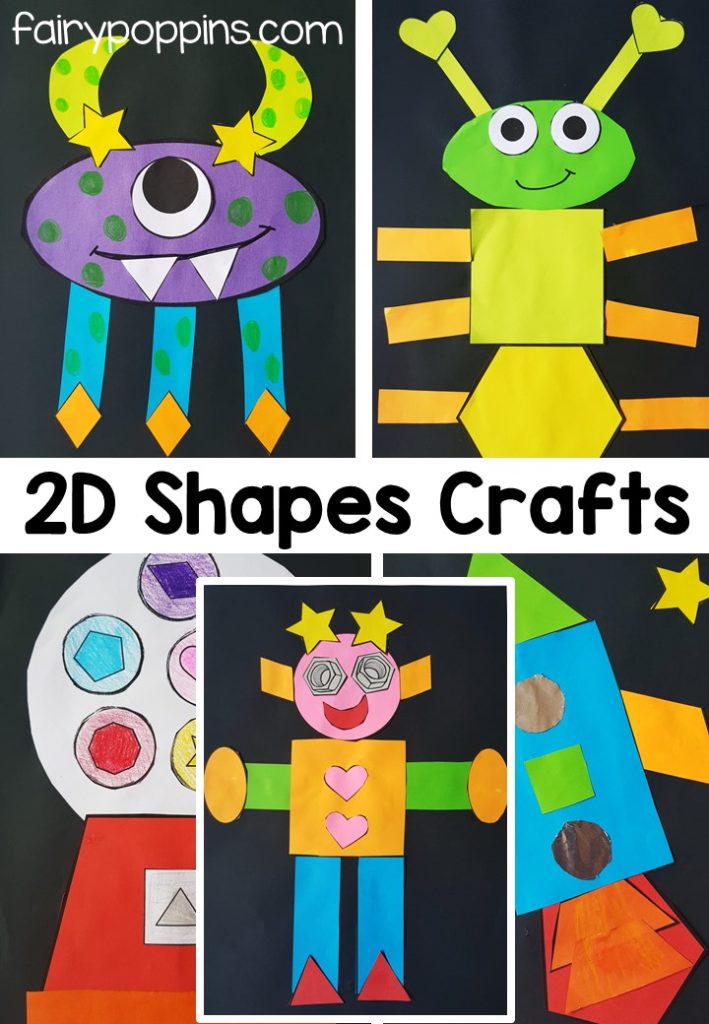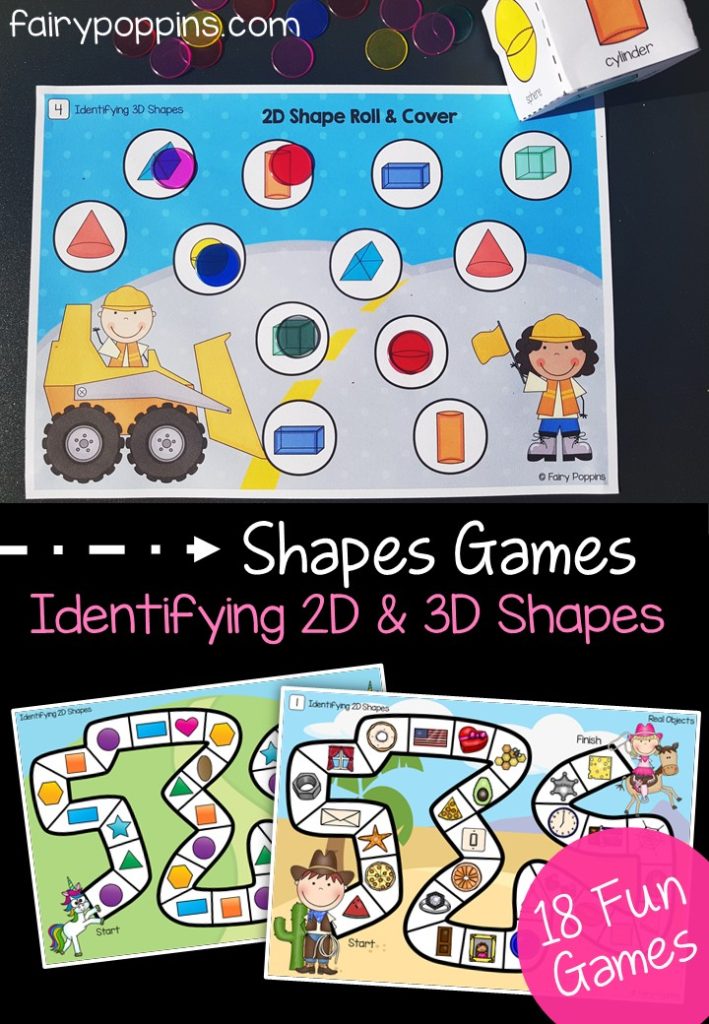Shapes Activities with Real World Objects
These 2D and 3D shape activities help kids learn to identify shapes using real world objects. They’re a fun addition to math centers or fine motor tubs in Preschool, Pre-K or Kindergarten.
By using real world objects to teach kids about shapes, you can make learning fun and interactive.
How To Teach Kids 2D and 3D Shapes with Real World Objects
1. Start with Basic Shapes
First introduce the names and properties of common 2D shapes (e.g., circle, square, rectangle) and 3D shapes (e.g., sphere, cube, cylinder). Use flashcards, posters, or drawings to illustrate each shape.
<<<Learn more about the Shapes Posters here>>
2. Use Real World Examples
Demonstrate examples of everyday objects that represent each shape, such as a plate for a circle or a ball for a sphere. The following punch cards can be added to morning tubs or math centers. Kids can use this activity to name and draw shapes. They usually love being able to use a hole punch and highlighter!
<<<Grab these shapes punch cards here>>>
3. Organize a Shape Scavenger Hunt
Create a scavenger hunt for kids to find and collect objects with specific shapes. This activity encourages active learning and helps reinforce shape recognition.
<<<Check out these shapes card games here>>>
4. Categorize and Sort Shapes
Ask children to sort a collection of objects based on their shape. This exercise helps them understand the differences between 2D and 3D shapes and strengthens their recognition skills. You may like the following 3D shape sorting activities which include photos of real world objects.
<<<Grab these sorting shapes activities here>>>
5. Encourage Building and Creating
Invite kids to create shapes using materials like clay, play dough, or building blocks. The following hands-on activities help kids learn about the properties of each shape.
<<<Get these free shape constructing activities here>>>
6. Integrate Shapes into Art Projects
Incorporate shapes into art projects with shape-themed stencils, stamps, or collage materials. Encourage children to identify the shapes in their artwork.
<<<Find these 2D shapes activities and craft templates here>>>
7. Play Shape Games
Use board games, puzzles, or online games focused on shape recognition and matching. The following shape board games are both educational and entertaining.
<<<Get these fun shapes board games here>>>
8. Read Shape-themed Stories
Read children’s books featuring shapes, and ask kids to identify the different shapes in the illustrations.
9. Discuss Shapes in Everyday Life
Point out and discuss the shapes of objects in your surroundings. This helps children make connections between the shapes they’ve learned and the real world.
By incorporating these engaging activities into your teaching, you’ll make learning about 2D and 3D shapes fun and accessible for children. As they develop their recognition skills, they’ll be better equipped to understand and navigate the world around them.

